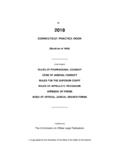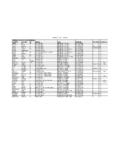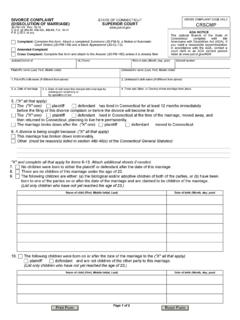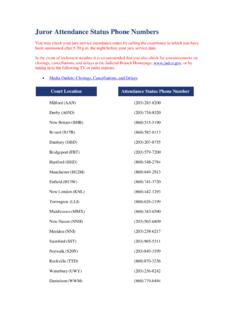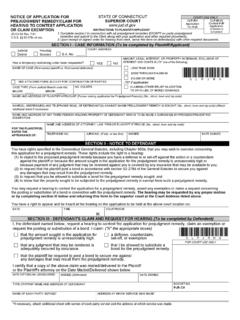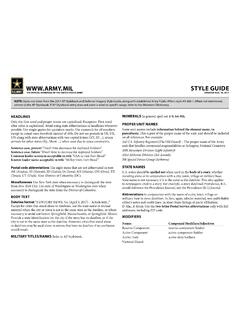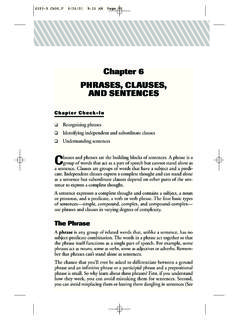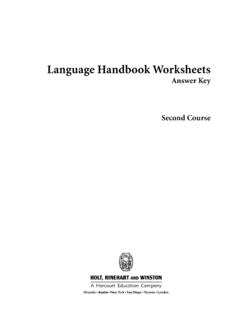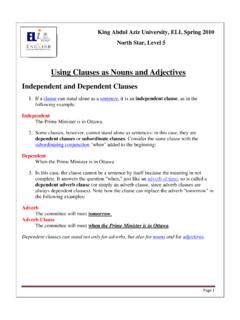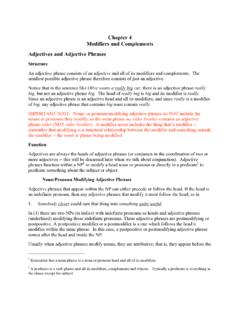Transcription of The Manual of Style for the Connecticut Courts
1 THE Manual OF Style FOR THE Connecticut Courts Third Edition The Office of the Reporter of Judicial Decisions THE Manual OF Style FOR THE Connecticut Courts Rules of Style observed in the publication of opinions in the official reports of the State of Connecticut Third Edition The Office of the Reporter of Judicial Decisions Copyright, 1993, 1997, 2013 by The Secretary of the State State of Connecticut iii FOREWORD Several years ago I established an ad hoc committee for the purpose of publishing a new revision of the Manual of Style for the Connecticut Courts .
2 The committee was cochaired by Justice Richard Palmer of the Supreme court and Judge Robert Beach of the Appellate court , and included certain law clerks and members of the Office of the Reporter of Judicial Decisions. Because the Style Manual had not been updated for some time, the committee solicited suggestions on changes to existing provisions and recommendations for additional provisions from all of the judges, law clerks and support staff of both Courts in revising this Manual . The updating of this Manual was not a simple task. Rather, it was a very extensive project that was undertaken by a number of dedicated people.
3 I speak on behalf of all of the judges of both the Supreme and Appellate Courts in expressing our sincere appreciation and gratitude to the many individuals who contributed their time and talent to this project, which culminated in the publication of this comprehensive and extraordinary Manual . This revised edition (May, 2013) of the Manual of Style for the Connecticut Courts was prepared by the Office of the Reporter of Judicial Decisions for use in the writing, editing, and publishing of opinions of the Connecticut Supreme and Appellate Courts . Accordingly, the Courts have adopted this Style Manual as a guideline for conventions to be followed in format, citation, quotation, and word Style and usage when writing opinions.
4 Chase T. Rogers Chief Justice Connecticut Supreme court iv INTRODUCTION The guidelines contained in the Manual of Style for the Connecticut Courts have been drafted by the Office of the Reporter of Judicial Decisions in accordance with the preferences of the justices of the Supreme court and the judges of the Appellate court . The Style Manual is intended to assist all justices, judges, law clerks, and support staff in the drafting and reviewing of opinions. The goal in drafting the Manual is to offer guidelines that will lead to relative consistency of structure and format in the opinions published in the Connecticut Reports, Connecticut Appellate Reports, and Connecticut Supplement.
5 The Manual seeks to balance the need for individuality of expression in the drafting of opinions with the need for consistency and uniformity of citation and clarity of expression within the decisions of the Connecticut Courts . The purpose of the guidelines is not to inhibit the individual writing Style of the authors, but to compile the standard conventions of the Courts in order to promote a better understanding of appellate opinions. Certain of the Style conventions contained herein have been observed in the Connecticut Reports for decades and others are obvious departures from the practices of the past. The last revision of the Style Manual was undertaken in 1997 and, consequently, the 2013 revision is a substantial expansion and modernization of the prior Style Manual .
6 This revision acknowledges the understanding that certain of the Style conventions have changed as the result of gradual evolution as required. The updating of the Manual will continue to be an ongoing process with the goal always to achieve a more readable text. Additionally, this Manual may be useful to those preparing appellate briefs and may offer readers of the official reports a better understanding of the process of reporting the opinions of the Courts . The examples in this Manual are not intended to be exhaustive, but rather are presented as illustrations of the rules that they accompany. Because it is not possible to anticipate every question that may arise concerning matters of Style , it is recommended that justices, judges, and law clerks consult with the editorial staff of the Office of the Reporter of Judicial Decisions on matters not covered in this Manual .
7 Thomas G. Smith Reporter of Judicial Decisions May, 2013 TABLEOFCONTENTSSTYLECONVENTIONS .. PARTIES,WITNESSES, .. List.. CaseCaptions.. QuotedMaterial.. ,RulesofPracticeandSimilarSources.. 53 STYLECONVENTIONS .. SpecialSession.. , .. 106 INDEX.. 111viiNOTES viii1 Style CONVENTIONS IN GENERAL I OPINION ORGANIZATION A Forming the Case Caption Generally, an opinion is reported under the name taken from the original pleadings. The case retains that name even if one or more parties were added on either side or intervened, or if a different party was substituted for the original plaintiff or defendant.
8 Note: These rules pertain to case captions only, and do not apply to case citations. In a citation, the case name is called the running head and is covered by the rules discussed in part XIV of this Style Manual . (1) Et al. Add et al. to the caption after the named party to indicate that the case involves more than one plaintiff or more than one defendant. Do not add et al. to the caption if parties have been added or have intervened after the filing of the original pleadings. Retain et al. in a caption that initially involved more than one plaintiff or defendant, and where all but one party on each side have been eliminated from the case by the time the opinion is issued.
9 (2) Action on Behalf of Minor Include et al. in the caption only if a parent or guardian in his or her own right is also seeking damages, such as medical expenses. Do not include PPA in the caption even though it appeared in the original pleadings. (3) Action Involving Executor or Administrator of Estate JOHN DOE, EXECUTOR (ESTATE OF JANE DOE) v. JOHN SMITH. If John Doe is seeking to recover on his own behalf as well as on behalf of the estate, add et al. following the closing parenthesis. JANE DOE, ADMINISTRATOR (ESTATE OF JOHN DOE), ET AL. v. JOHN SMITH (Probate court Rules of Procedure are not gender specific.)
10 (4) Action Involving Commissioner or Department Head (a) If original pleading identifies a commissioner by his or her given name, use the term commissioner instead in the caption if the action is brought against the commissioner in his or her official capacity, as the named individual may have changed. 2 Examples: John Doe v. Commissioner of Transportation Jane Doe v. Commissioner of Correction (b) In termination of parental rights cases and other matters in which the commissioner of children and families and the department of children and families are involved, pursuant to statute: (i) the commissioner files petition to terminate parental rights (ii) the department provides steps for reunification of parent with child.
